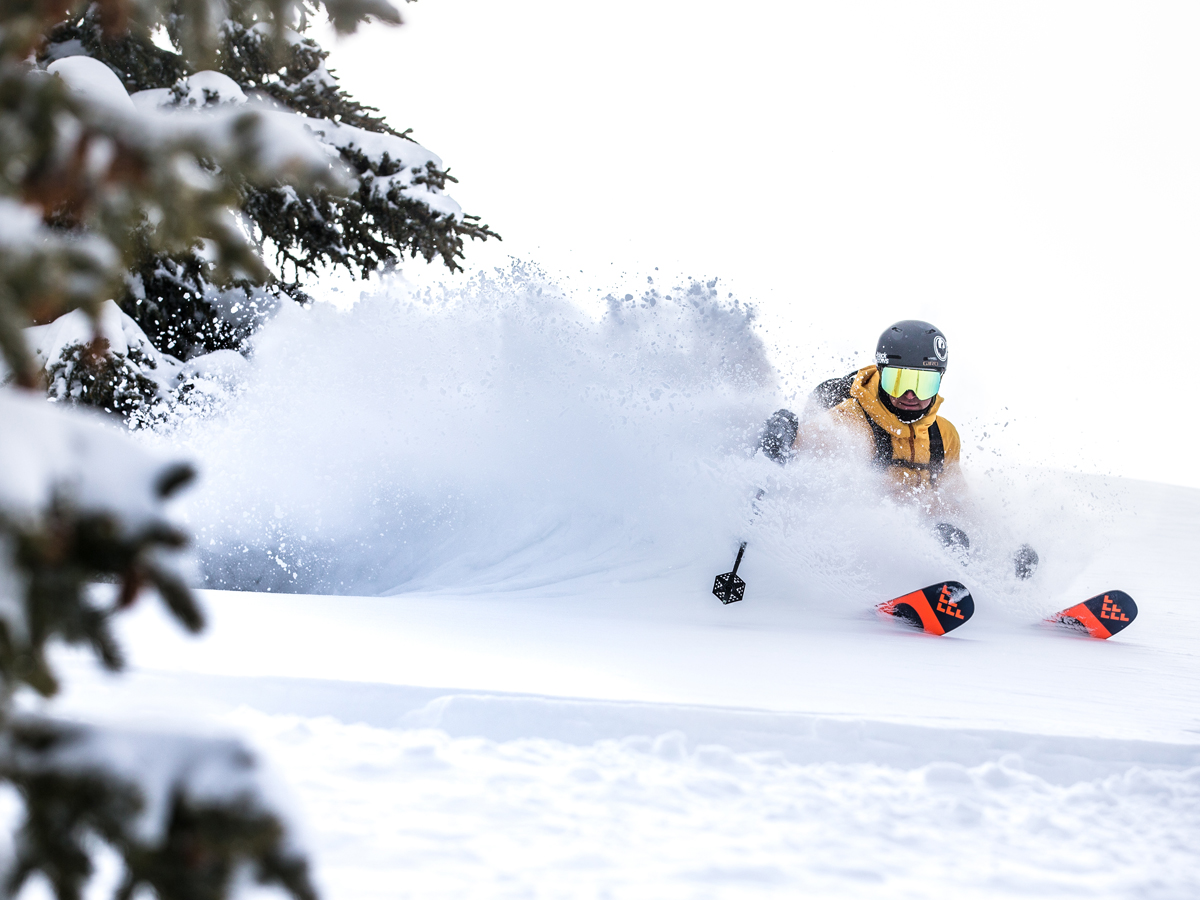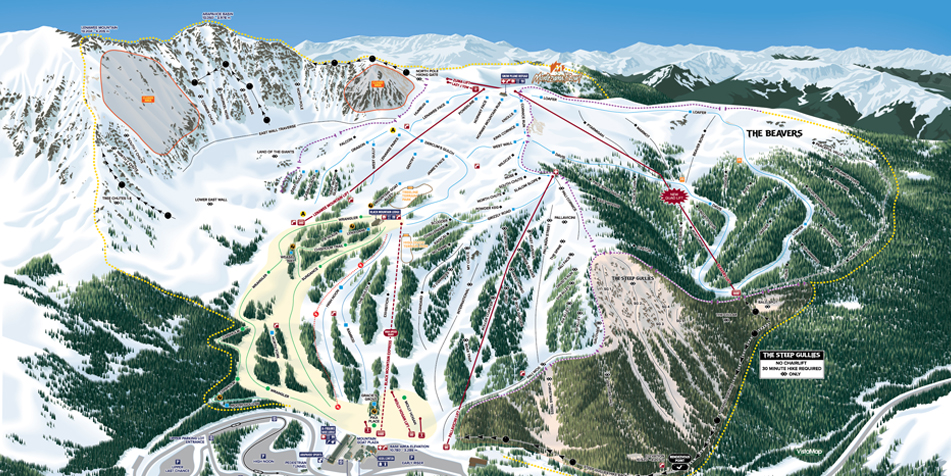Arapahoe Basin
The Legend just got larger
WORDS • ERIN SPONG | FEATURED IMAGE • DAVE CAMARA
Affectionately referred to as The Legend by locals, Arapahoe Basin has a reputation for being an experts’ resort. With a lofty 13,050-foot summit above its famed East Wall hike-to terrain, it is one of Colorado’s highest ski areas. The 1,428-acre mountain boasts a butterfly-inducing 2,530-foot vertical drop, and 93 percent of the 145 trails are rated as intermediate, advanced or expert terrain. Its reputation attracts some of the most extreme skiers from Colorado’s Front Range and beyond, who push their limits season after season, fueled by the insane terrain. In 2007, A-Basin, with a nod to those skiers, increased its skiable acreage by 80 percent when the 400- acre Montezuma Bowl was brought under the resort’s fencing, the largest expansion since A-Basin’s inception in 1946.
Ten years later, A-Basin again made waves amongst the Summit County community, announcing it would bring former lift-accessed backcountry zones, the Beavers and the Steep Gullies, inbounds for the 2017-18 season. Plans for annexing this terrain had been in the works for more than two decades, with the majority of the planning and execution in the last ten years being led by Chief Operating Officer Alan Henceroth.
“[The Beavers] is the kind of terrain Colorado skiers love,” said Henceroth. “It ranges from high alpine, above timberline bowl skiing to a couple groomers and just some unbelievably phenomenal black diamond tree glades. Then the Steep Gullies are just as cool of a double black diamond chute as you can find anywhere.”
While the terrain was introduced as a “hike-out” zone last season, Arapahoe Basin is completing the final piece of its expansion puzzle with a brand-new fixed-grip quad lift appropriately named Beavers Lift, which will serve the upper two-thirds of the Beavers at the start of the 2018-19 season. Meanwhile, the Steep Gullies will remain as hike-out terrain. With all that can go wrong on a project of this scale, the lift has posed the only logistical challenge for Henceroth and his team. After years of trying to figure out how to make the lift reach completely top to bottom of the Beavers area, the idea of ending it two thirds of the way down proved to be advantageous for two reasons.

“The snow is really the best about two thirds of the way down into the valley,” said Adrienne Saia Isaac, former marketing and communications manager for Arapahoe Basin. “[So] we didn’t extend the lift all the way down; one, because of snow conditions but also because there’d be less of an environmental disturbance.”
Perhaps what’s most impressive about this expansion isn’t the additional 468 acres of breathtaking terrain but the efforts taken to mitigate environmental impact, like the decision to end Beavers Lift early, which reduced tree cutting by 75 percent. Just as the Montezuma Bowl expansion, this project is completely roadless, requiring employees to hike 30 to 45 minutes in and an hour out every single day, operate 100 percent on foot within the expansion zone and transport materials via helicopter. “You’re not going to [be able to] tell that we did all this work in five years and that’s what we want,” said Louis Skowyra, slopes maintenance manager for Arapahoe Basin. “So, despite it being the hard, expensive way, it’s the right way to do this project.”
With work still left to be done on the $6 million expansion before the snow falls, Skowyra and his crew are doing everything they can to leave behind a pristine zone for A-Basin skiers to explore and challenge themselves in a mitigated, patrolled environment. However, this project, as momentous as it is for the resort, has not gone without resistance. Many locals who utilized this lightly trafficked, lift- accessed backcountry zone for their private splendor have voiced concerns. “There were a lot of people who were super bummed and super opinionated about it,” said Kurtis Hamman, a Summit County local and avid A-Basin skier for nearly 30 years, who also notes that the Beavers zone was part of the original plan for the ski area when it was founded. “We have to take a step back and think a little with [the founders’] vision and how excited they were,” said Hamman. “These people had a dream when it started. Who are we to ‘poo poo’ on that?”
Despite some locals dragging their heels, A-Basin has only seen smiling faces, both from guests and employees, coming out of the trails since bringing these zones under its belt last season. The only further expansion A-Basin has planned to complement the new 400-plus acres of resort skiing is its staff–predominantly in ski patrol.
“I’m super proud of what we’ve been able to do out here, and I feel like our staff here is taking advantage of this opportunity, one that in my opinion comes around once in a career,” said Skowyra. “I can’t wait to show off our work to half a million people this coming season.”
Notorious for having one of the longest ski seasons in the country, Arapahoe Basin will open some time in October and run until June. With the annexed zones of the Beavers and the Steep Gullies as well as the addition of the Beavers Lift, The Legend has a whole new side that’s just waiting to be explored.
STAT SHEET
Average Annual Snowfall: 350 inches
Total Skiable Acreage: 1,428 acres
Number of lifts: 9 lifts
Vertical Drop: 2,530 feet
Total Trails: 145
Regional Airport: Eagle County Regional Airport (EGE)
TRAIL BREAKDOWN
Beginner: 7%
Intermediate: 20%
Advanced: 49%
Expert: 24%


